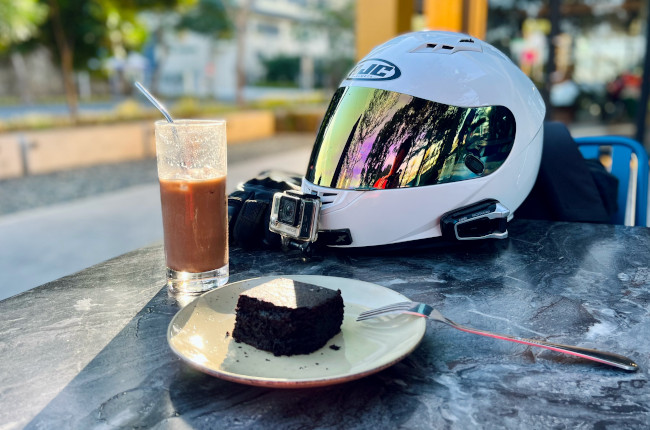How to prevent hearing loss from riding your motorcycle
Sometimes ATGATT just isn’t enough.

You've undoubtedly been lectured a million times about the many pieces of motorcycle safety gear you should wear. In fact, chances are you probably have regular gear you put on as part of your regimen before you hit the road. Now, whether you've debated about the benefits of wearing a specific type of helmet, or if you're sporting the most premium, high-quality riding gear, you may have neglected to protect one crucial point: your hearing.
When riding a motorcycle at highway speeds, riders are subjected to extreme noise. It's not the engine's rumble that bothers riders; it's the "noise turbulence produced around the head while the rider is in motion," also known as wind noise. At highway speeds, wind noise frequently approaches 100 decibels. To put that into context, that's approximately the same as a chainsaw. Having said all that, there are a few things you can do in order to protect your ears while riding a motorcycle—especially if you’re one to frequent the expressways.
Get a quiet full-face helmet

Naturally, some helmets are quieter than others. Oftentimes, the quietness of a helmet is equally proportionate to its price, as more expensive helmets make use of higher quality liners and pads that do a better job of sealing your head away from wind exposure at speed. While there is no such thing as a helmet that eliminates wind noise, several high-quality, top-shelf lids do a good job at curbing the discomfort caused by wind noise. These helmets usually take the form of full-face helmets that provide a good seal in your neck and chin area, as well as an air-tight seal in the visor.
When choosing a long-distance touring helmet, make sure you get one with vents which can be toggled open or closed. Keeping the vents closed prevents wind from entering your helmet, thereby quieting things down a bit more. Additionally, ensuring your helmet has a thick and snug neck-roll, as well as a large chin curtain pays dividends in quieting things down, especially at highway speeds. That being said, open-face helmets, as well as cheaper modular helmets, tend to be extremely noisy at speed due to the fact that they don’t provide an adequate seal between your head and the turbulent wind. In fact, these helmets amplify the wind noise by increasing its frequency, thereby increasing discomfort and the potential for hearing damage down the road.
Wear earplugs

Sometimes, even the quietest of helmets, such as the Schuberth C5, still aren’t enough to keep you comfortable for long hours on the saddle. As such, you may need to resort to using earplugs, especially on multiple-day trips aboard your big bike. Now, earplugs come in a variety of shapes and sizes, and some work better than others. Generally speaking, you’re going to want to pick a pair of ear plugs designed specifically for motorcycle riders. These protective pieces of equipment have been designed to be worn underneath a helmet, and don’t add any uncomfortable pressure points to your ears and head while on the bike. If motorcycle-specific earplugs are out of reach for you, then you may want to consider soft foam earplugs, similar to what you find in the airport prior to going on a flight.
Take frequent breaks

If you already have a really quiet helmet, and also use earplugs, but still find the wind noise to be rather taxing, then it’ll certainly pay dividends to take several breaks to recharge your body and allow your ears to get some much-needed relaxation. Planning your stops ahead, especially on the highway, can go a long way in reducing fatigue, and of course, preserving your hearing in the long run. Not only does taking breaks protect your hearing, it also allows you to stretch your arms and legs and prepare for even longer hours on the bike. Allowing yourself to recharge will ultimately result in a safer, more enjoyable ride.
Related Articles
-
Big bike versus small bike: which one is better for your lifestyle? / Featured Article
Here are a few tips to decide if you should get a big bike or small bike depending on your lifestyle.
-
Axial versus radial calipers - brake technology explained / Featured Article
Today, let’s talk about the differences between radially and axially mounted calipers, and determine the situations which are ideal for either.
-
Is your motorcycle out of warranty? Be sure to check these items ASAP / Featured Article
If your motorcycle is out of warranty, it’s now your duty to make sure you stay on top of its maintenance no matter what, or run the risk of facing a hefty repair bill.
-
Three reasons why you need a dual-sport motorcycle in your garage / Featured Article
Here are a few reasons why you need a dual-sport motorcycle in your garage, and a few reasons why they’re the most versatile machines on two wheels.
-
Think twice before installing these 3 motorcycle modifications / Featured Article
When it comes to upgrading your motorcycle, you may want to think twice before installing these 3 mods.
Latest Features
-
Big bike versus small bike: which one is better for your lifestyle? / Featured Article
Here are a few tips to decide if you should get a big bike or small bike depending on your lifestyle.
-
Axial versus radial calipers - brake technology explained / Featured Article
Today, let’s talk about the differences between radially and axially mounted calipers, and determine the situations which are ideal for either.
-
3 things that make the Honda ADV 160 the perfect small-displacement all-rounder / Featured Article
Here are three reasons why the new Honda ADV 160 is one of the best small-displacement scooters in the market today.







